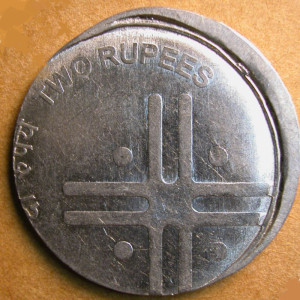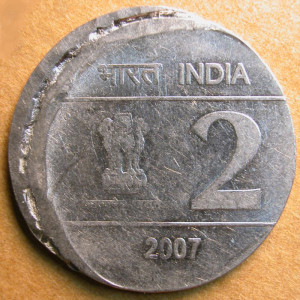PART IV: Die Errors
Die Deterioration/Deformation Errors:
Reciprocally Deformed Convexo-Concavo Dies
Definition: This rare error occurs when one die face sinks in and the other bulges out in a complementary fashion. The effect can affect the center of the die face or the edge of the die face. The affect can be global (affecting the entire die face) or local.
The only known case among domestic coins is found in a production run of 2001-P half dollars. The dies show a pattern of global, centralized deformation. The reverse die sank in while the obverse die bulged out.
The images below show one of these half dollars. The reverse face bulges out noticeably, and the coin spins effortlessly around the highest point of that bulge, which lies in the center of the reverse face. Semicircular die cracks run through the ring of stars and the clouds that lie above the eagle. These cracks probably mark the edge of the zone of subsidence.
The obverse face is more concave than normal, although the effect is subtle.
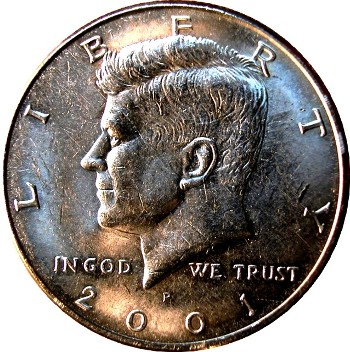
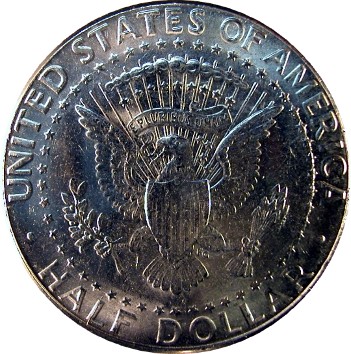
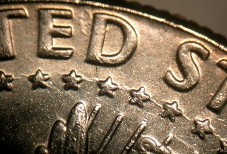
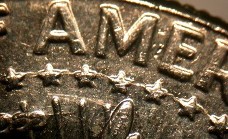
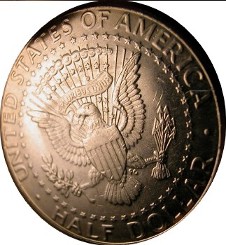
A second case of reciprocal die deformation has been recorded in an off-center 2007 India 2 rupee coin (see photos below). Here the deformation is restricted to the right side of the reverse (hammer) die and the corresponding left side of the obverse (anvil) die. The periphery of the reverse die assumed a concave cross-sectional profile, leaving the reverse face of the coin with a convex surface on the right side. The periphery of the obverse die assumed a convex cross-sectional profile, leaving the obverse face with a concave surface on the left side.
The downwardly inflected edge of the reverse die cut deeply into the planchet. The upswept perimeter of the obverse face meets the unstruck portion of the planchet in a more gentle fashion. The unstruck crescent on the left side of the obverse face has a very deep, very irregular collar scar, indicating that the collar was damaged. This coin also shows a horizontal misalignment of the obverse (anvil) die. This indicates that either the collar broke free of its moorings or that it broke apart, freeing the anvil die of its embrace.
